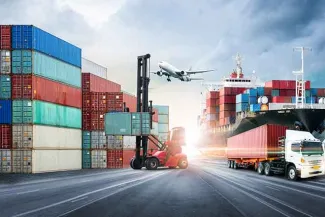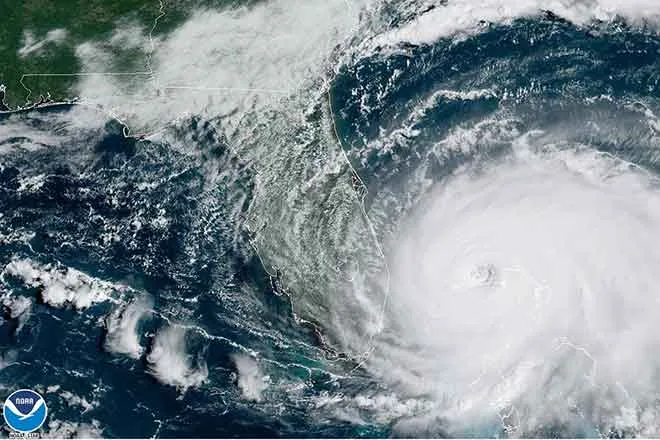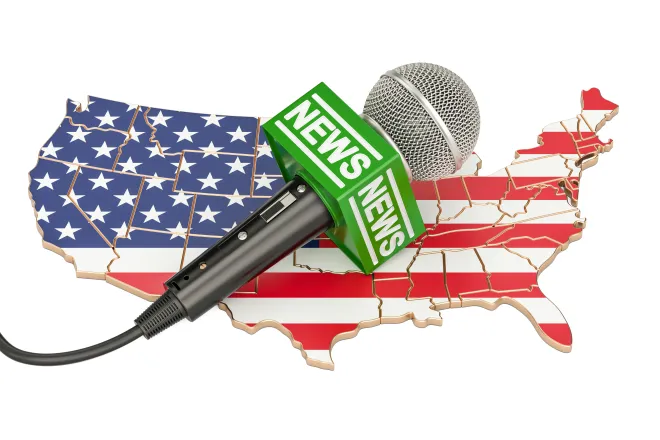
White House announces tariffs on products from Canada, Mexico, China
President Donald Trump plans to implement tariffs on Canada, Mexico and China Saturday, potentially starting off a trade war that would likely lead to price increases on groceries and numerous other products.
White House press secretary Karoline Leavitt said during a briefing Friday that Trump will place 25 percent tariffs on goods coming into the United States from Canada and Mexico, and a 10 percent tariff on imports from China. Tariffs are paid by businesses bringing goods into the United States from other countries and they often pass on the increase in costs to consumers.
“The tariffs are incoming tomorrow on Canada and the reason for that is because both Canada and Mexico have both allowed an unprecedented invasion of illegal fentanyl that is killing American citizens and also illegal immigrants into our country,” Leavitt said.

U.S. President Donald Trump. FlickrCC - Gage Skidmore
Trump hasn’t yet decided if he will later implement tariffs on the European Union, made up of 27 countries, according to Leavitt.
“I won’t get ahead of the president on tariffs when it comes to the European Union,” she said.
Trump said later Friday from the Oval Office that he wasn’t using the tariffs as a negotiating tool, but as a way to raise revenue for the federal government and bring attention to fentanyl flowing into the country.
“We’re not looking for a concession. We’ll just see what happens,” Trump said.
The new tariffs will be stacked on top of existing tariffs, he said.
Trump said he planned to add additional tariffs at some point on computer chips and “things associated with chips,” oil and gas, steel, aluminum, copper, pharmaceuticals and “all forms of medicine.”
Trump said he will likely implement the oil and gas tariffs on Feb. 18, but didn’t provide dates for the other tariffs.
Trump brushed aside a question about how tariffs would impact prices, saying he was elected to reduce inflation. He said he wasn’t concerned about the stock market’s reaction on Friday afternoon to the impending tariffs.

© iStock - Tryaging
Many economists, including those at conservative think tanks, like the American Enterprise Institute, have warned against broadly applying tariffs in this way.
Phil Gramm, former Republican chairman of the Senate Banking Committee and nonresident senior fellow at AEI, and Larry Summers, former Treasury Secretary during the Clinton administration, wrote an op-ed published by the Wall Street Journal on Thursday urging Trump not to implement tariffs.
“Our united opposition to non-defense-related tariffs is based not on our faith in free trade but on evidence that tariffs are harmful to the economy,” they wrote.
“Protective tariffs distort domestic production by inducing domestic producers to commit labor and capital to produce goods and services that could have been acquired more cheaply on the international market,” Gramm and Summers wrote. “That labor and capital are in turn diverted from producing goods and services that couldn’t be acquired more cheaply internationally. In the process, productivity, wages and economic growth fall while prices rise. Tariffs and the retaliation they bring also poison our economic and security alliances.”
Leavitt said during the press briefing that only Trump could decide whether he would eventually lift or alter the tariffs, while brushing aside the potential impacts to the U.S. economy.
The U.S. Department of Agriculture’s Economic Research Service writes on its website that Canada and Mexico “are the United States’ first and third largest suppliers of agricultural products (averaging $30.9 billion and $25.5 billion in 2017–21, respectively).
“Mexico supplied the United States with 31 percent of imported horticultural products including fruit, vegetables, and alcoholic beverages. Canada is also a source of horticultural products, as well as grains, and meats.”
The Office of the United States Trade Representative writes on its website that the U.S. imported $562.9 billion worth of goods from China during 2022.
U.S. agricultural exports to China, which could be impacted by retaliatory tariffs, totaled $36.4 billion during fiscal year 2022, according to the USDA’s Foreign Agricultural Service.
“U.S. exports have returned to trend growth experienced since the People’s Republic of China’s (PRC) accession to the World Trade Organization (WTO) and in the last 2 years the United States has witnessed record export values to China for soybeans, corn, beef, chicken meat, tree nuts, and sorghum. Cotton exports to China have also rebounded, propelled by strong demand. All these products are major contributors to the U.S. farm economy.”
Ashley Murray contributed to this report.
Colorado Newsline is part of States Newsroom, a nonprofit news network supported by grants and a coalition of donors as a 501c(3) public charity. Colorado Newsline maintains editorial independence. Contact Editor Quentin Young for questions: info@coloradonewsline.com.

















